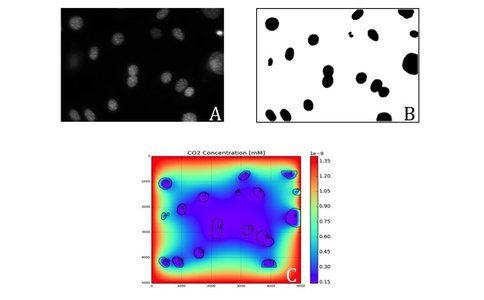2015 Annual Science Report
 University of Colorado, Boulder
Reporting | JAN 2015 – DEC 2015
University of Colorado, Boulder
Reporting | JAN 2015 – DEC 2015
Modeling Habitable Environments Generated by Water/rock Reactions
Project Summary
This project within the RPL NAI seeks to develop a framework for predicting biological potential (for example, volumetric biomass abundance) as a function of enviromental variables such as rock and fluid composition, water-to-rock ratio, and temperature. Building on the prediction that energy availability will be a key limitation in subsurface systems, we evaluating how variabliity in these environmental factors changes the potential to generate energy through particular metabolisms, and how that potential compares to the corresponding energetic demands of life within a particular set of physicochemcial conditions. We inform and ground truth this approach by comparing the landscape of energy availability in natural systems, such as the CROMO system, to the distribution of microorganisms observed there.
Project Progress
Energy availability is expected to be a significant limitation on biological potential within rock-hosted systems; this project within the RPL NAI is designed to evaluate energy availability as a function of physicochemical environment, with two principal objectives: (i) to determine how biological potential varies as a function of rock composition, fluid composition, temperature, and metabolism, within a phase space defined by the observed natural range of conditions in serpentinzing systems; (ii) to compare the energy available in specific metabolisms to observed distributions of microbial abundance, community composition, and activity. These two objectives are designed to be mutually informative, with (i) constituting a prediction and (ii) representing ground truth for that prediction.
Progress on Objective (i): We are developing a cell-scale reactive transport model to quantify metabolic energy production rates based on real or hypothetical chemical and physical inputs. Building on an existing model that calculates cross-membrane transport rates of CO2 in a single cell with spherical symmetry, we have developed a two-dimensional version that can incorporate spatial heterogeneity – for example, an asymmetrical distribution of cells or sources of substrate. The new model is implemented in the MUMPS (Multifrontal Massively Parallel sparse direct Solver) algorithm and thereby solved on the NASA Ames Pleiades supercomputer. A key feature of the new implementation is the capability to supply inputs using real imagery, as illustrated in Figure 1. This result provides both proof of concept and a path forward for development of a fully three-dimensional code that will allow us to more accurately simulate the heterogeneous water-rock environment.
Progress on Objective (ii):
Year 1 efforts have focused on the CROMO site. We conducted quarterly analyses of well fluid chemistry in each of four wells. Chemistry data were used to calculate both molar and volumetric Gibbs energy yields for nine metabolisms (three aerobic and six anaerobic). Additionally, depth profiles of oxygen concentration were collected for two wells during one of the quarterly samplings, in order to determine the potential distribution of aerobic vs. anaerobic metabolisms. The wells are fully anoxic below 3 meters and microaerobic to aerobic above, such that we are able to sample a range of potential metabolic zones. Across all wells and all metabolisms, volumetric Gibbs energy yields – which are taken here as a first approximation to metabolic power – exhibit a nearly 7,000-fold variation. Aerobic methane oxidation affords the largest energy yields in both molar and volumetric terms, and incubation experiments are in process from a late January 2016 field trip to determine whether this metabolism occurs actively at CROMO. Anaerobic metabolisms generally exhibit less than 10-fold variation in volumetric Gibbs energy yield across wells, while the variation among metabolisms is as much as 70-fold even within one well. Carbon monoxide-based metabolisms deliver the highest energy yields, and efforts are currently underway to identify the genetic potential for such metabolisms in metagenomic analyses being conducted on the CROMO fluids. Collectively, these metabolic yield calculations provide the geochemical context for an analysis of microbial community structure at CROMO, which will shortly be submitted to the ISME Journal.
-
PROJECT INVESTIGATORS:
-
PROJECT MEMBERS:
Dawn Cardace
Co-Investigator
Thomas McCollom
Co-Investigator
Everett Shock
Co-Investigator
Sanjoy Som
Co-Investigator
-
RELATED OBJECTIVES:
Objective 2.1
Mars exploration.
Objective 2.2
Outer Solar System exploration

